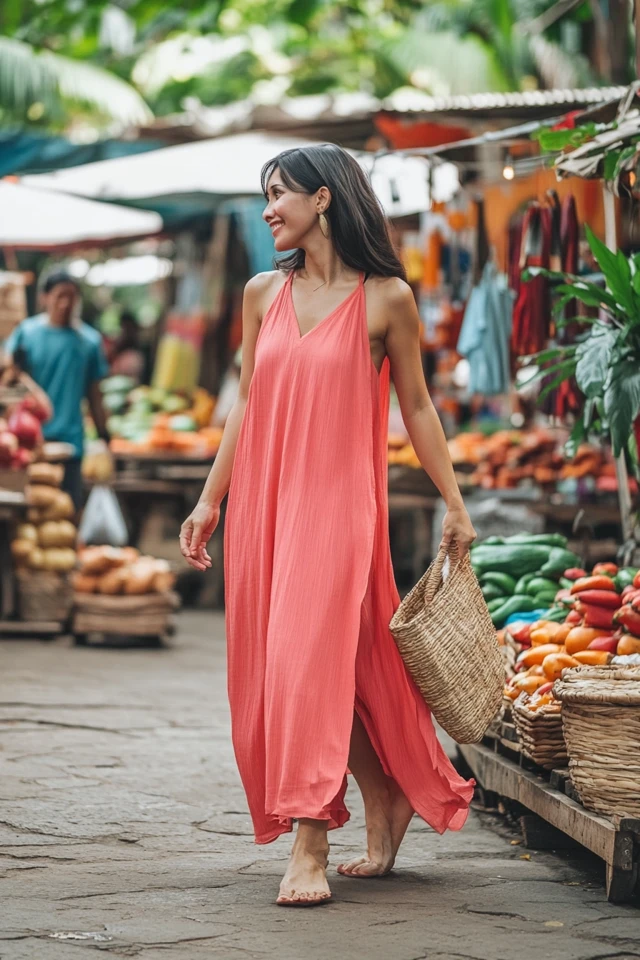Introduction
Living in a region with high humidity presents unique challenges, especially when it comes to fashion. The relentless moisture in the air can make even the most carefully chosen outfits feel uncomfortable and clingy. Sweaty skin, damp fabrics, and the constant battle against frizz can dampen your style spirit. However, with the right knowledge and wardrobe choices, you can navigate humid climates with ease and grace. This guide explores humidity-friendly fashion, focusing on fabrics and styles that breathe, ensuring you stay cool, comfortable, and stylish no matter how sticky the air gets.
My Personal Battle with Humidity
A few summers ago, I found myself relocating to a city renowned for its sultry summers and high humidity levels. As someone who loves fashion and takes pride in dressing well, I was initially daunted by the prospect of maintaining my style in such a climate. My first few weeks were a struggle—my favorite cotton dresses would cling uncomfortably, and my once-crisp shirts became wrinkled and damp by midday. It wasn’t until I delved into the world of humidity-friendly fashion that I began to reclaim my wardrobe and feel comfortable without sacrificing style.
About the Author and My Trend Boutique
Understanding Humidity-Friendly Fabrics
The Science Behind Breathable Fabrics
Humidity-friendly fabrics are designed to allow air circulation, wick moisture away from the body, and dry quickly. These qualities help regulate body temperature, reduce sweat buildup, and prevent the discomfort associated with damp clothing. The key is to choose materials that are lightweight, have a loose weave, and possess inherent moisture-wicking properties.
Natural vs. Synthetic Fabrics
Natural fabrics like cotton, linen, and bamboo are renowned for their breathability and comfort in humid conditions. They allow air to flow freely, reducing the buildup of heat and moisture. On the other hand, synthetic fabrics such as polyester and nylon can trap heat and moisture, making them less suitable for high-humidity environments. However, advancements in textile technology have led to the development of moisture-wicking synthetics that can perform well in humid climates.
Best Fabrics for Hot and Humid Climates
Cotton
Cotton is a staple in many wardrobes, and for good reason. It’s soft, breathable, and highly absorbent, making it perfect for humid weather. Lightweight cotton fabrics like voile, lawn, and chambray allow air to circulate, keeping you cool and comfortable.
Linen
Linen is another excellent choice for humid climates. Known for its exceptional breathability and moisture-wicking properties, linen garments keep you cool even in the hottest weather. Its loose weave allows air to pass through easily, making it a favorite for summer dresses, shirts, and trousers.
Bamboo
Bamboo fabric is gaining popularity for its sustainability and comfort. It’s incredibly soft, breathable, and has natural moisture-wicking properties. Bamboo fabric also has antibacterial qualities, which help reduce odor—a common issue in humid conditions.
Rayon and Tencel
Rayon and Tencel are semi-synthetic fabrics that offer a good balance between comfort and style. They are lightweight, breathable, and have excellent moisture-wicking capabilities. These fabrics drape beautifully, making them ideal for flowy dresses and blouses.
Performance Fabrics
Modern performance fabrics like polyester blends with moisture-wicking technology are designed to keep you dry and comfortable. These fabrics are engineered to pull sweat away from the body and dry quickly, making them suitable for both activewear and everyday clothing in humid climates.
Stylish Clothing Tips for Humid Weather
Opt for Loose-Fitting Clothes
Tightly fitted clothing can trap heat and moisture, making you feel hotter and stickier. Loose-fitting garments allow air to circulate around your body, enhancing breathability and comfort. Flowing maxi dresses, wide-leg pants, and oversized shirts are not only comfortable but also stylish choices for humid weather.
Choose Light Colors
Dark colors tend to absorb more heat, making you feel warmer in humid conditions. Light-colored clothing reflects sunlight, keeping you cooler. Whites, pastels, and neutrals are excellent choices for maintaining a fresh and cool appearance.
Embrace Moisture-Wicking Technology
Many modern fabrics come with moisture-wicking properties that help keep you dry. Look for clothing labeled with moisture-wicking or quick-drying features, especially for activewear and evening outfits. These technologies pull sweat away from the skin, allowing it to evaporate quickly.
Incorporate Natural Fabrics
As mentioned earlier, natural fabrics like cotton and linen are ideal for humid weather. They are breathable, comfortable, and versatile, making them suitable for a variety of outfits. Incorporate these fabrics into your wardrobe through tops, dresses, skirts, and lightweight outerwear.
Layer Lightly
Layering in humid climates can be tricky, but with the right approach, it’s possible. Opt for lightweight layers that can be easily removed as the temperature rises. A sheer cardigan or a lightweight denim jacket can add style without adding bulk or heat.
Accessories to Beat the Humidity
Hats
A stylish hat can provide much-needed shade and protect your face from the sun, reducing the overall temperature and preventing sweat buildup. Wide-brimmed hats, straw hats, and caps are great options for both functionality and style.
Sunglasses
Protect your eyes from the harsh sunlight with a pair of chic sunglasses. Not only do they shield your eyes, but they also add a fashionable touch to your outfit.
Breathable Footwear
Shoes play a crucial role in keeping your feet cool and dry. Opt for breathable materials like canvas, mesh, or lightweight leather. Sandals, espadrilles, and breathable sneakers are excellent choices for humid weather.
Lightweight Scarves
A lightweight scarf can be a versatile accessory in humid climates. It can be worn around the neck for a touch of style or draped over the shoulders for added protection from the sun. Choose scarves made from breathable fabrics like cotton or linen.
Moisture-Wicking Undergarments
Invest in moisture-wicking undergarments to keep sweat away from your skin. These undergarments help maintain comfort and reduce the risk of irritation and odor.
Layering Smartly in Humidity
Thin Layers Over Thick Ones
When layering in humid weather, opt for thin, breathable layers instead of thick, heavy ones. This allows you to adjust your outfit easily based on the temperature and your activity level.
Use Lightweight Outerwear
Choose outerwear that is lightweight and breathable, such as a linen blazer or a cotton kimono. These pieces add structure to your outfit without adding excessive warmth.
Strategic Layering
Layering strategically can enhance your outfit’s versatility. For example, a lightweight cardigan can be paired with a sleeveless dress or a tank top, providing the option to add or remove layers as needed.
Maintenance and Care of Humidity-Friendly Clothing
Proper Washing Techniques
To maintain the breathability and longevity of your humidity-friendly clothing, follow proper washing techniques. Use cold water and mild detergents to prevent shrinking and damage to the fabric’s fibers. Avoid overloading the washing machine to ensure thorough cleaning.
Drying Methods
Air drying is the best method for humidity-friendly fabrics like cotton and linen. Hang your clothes in a well-ventilated area to allow them to dry naturally. Avoid using high heat in the dryer, as it can damage the fabric and reduce its breathability.
Ironing and Steaming
Ironing can help maintain the crispness of your garments, but it’s essential to use the right temperature for each fabric. Use a low heat setting for delicate fabrics like silk and rayon. Alternatively, steaming is a great way to remove wrinkles without direct contact, preserving the fabric’s integrity.
Storage Tips
Store your humidity-friendly clothing in a cool, dry place to prevent mildew and odor buildup. Use breathable garment bags or storage containers to keep your clothes fresh and wrinkle-free. Avoid plastic bags, as they can trap moisture and damage the fabric.
Picture Gallery
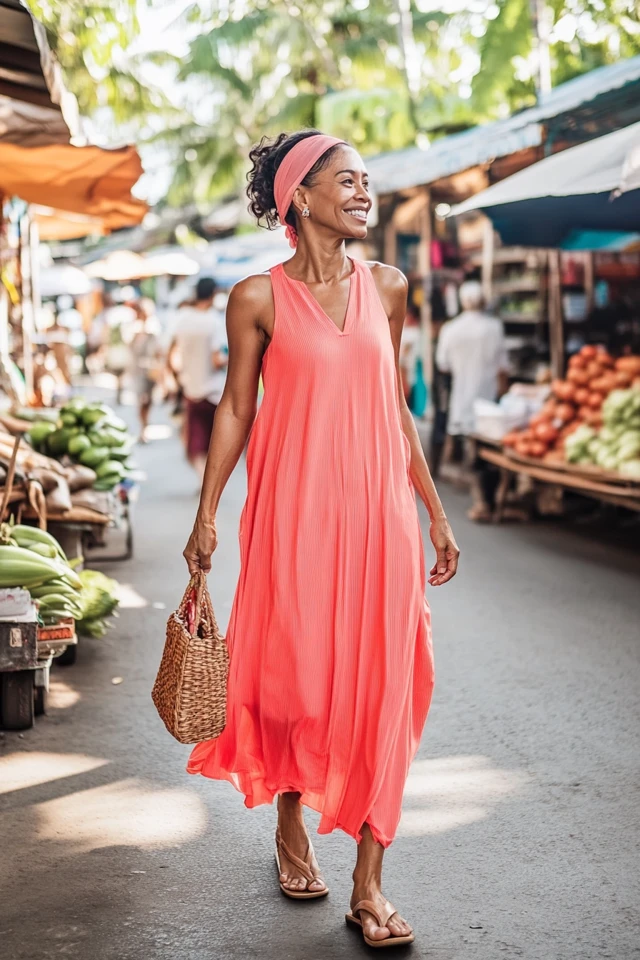


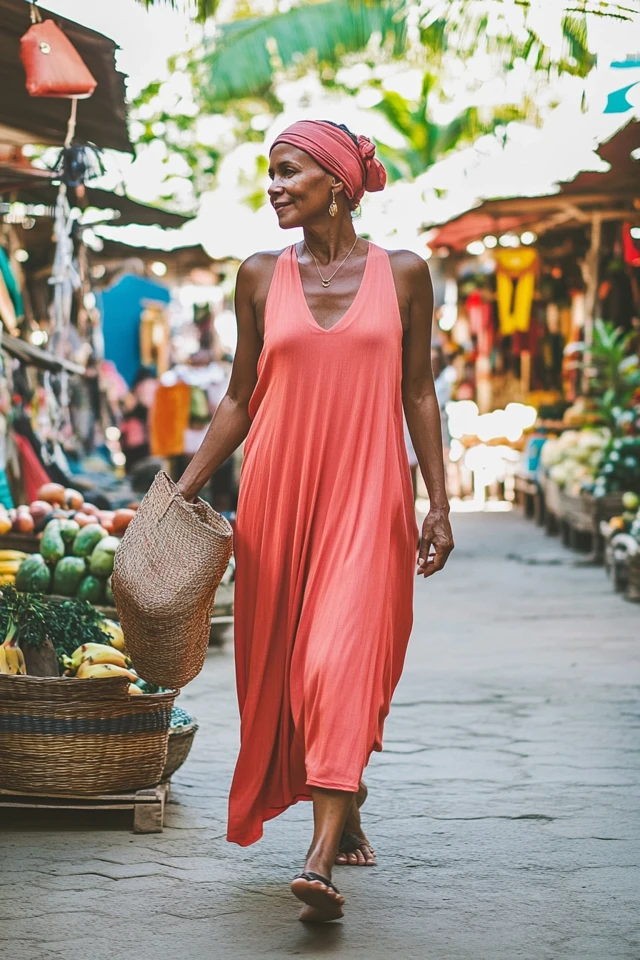
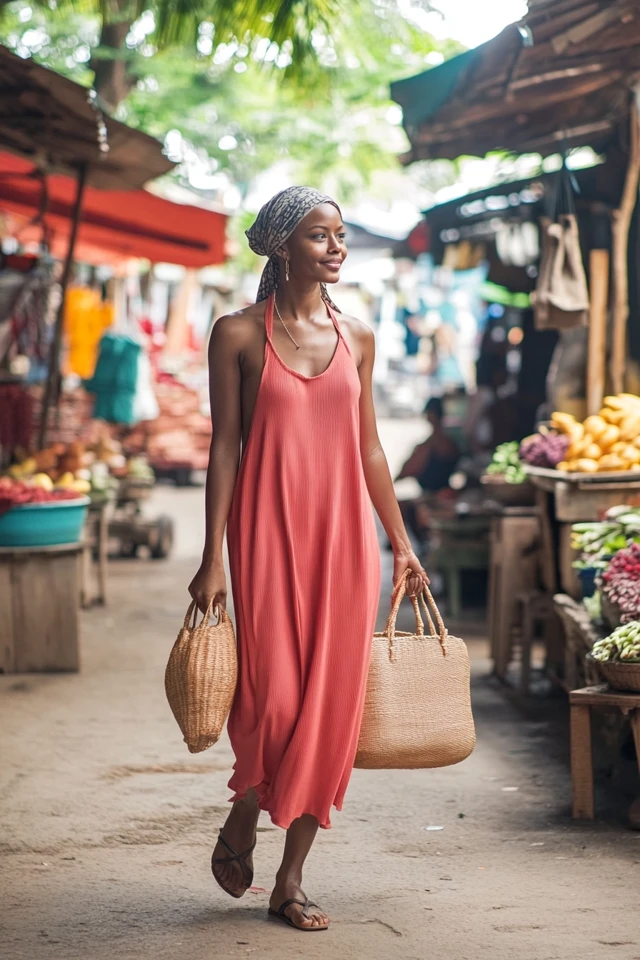
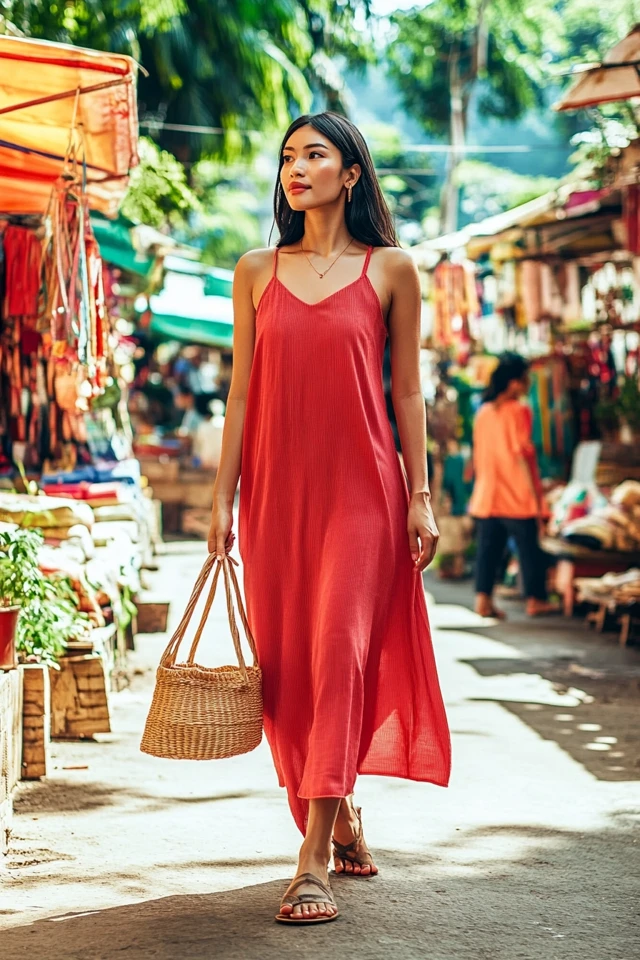
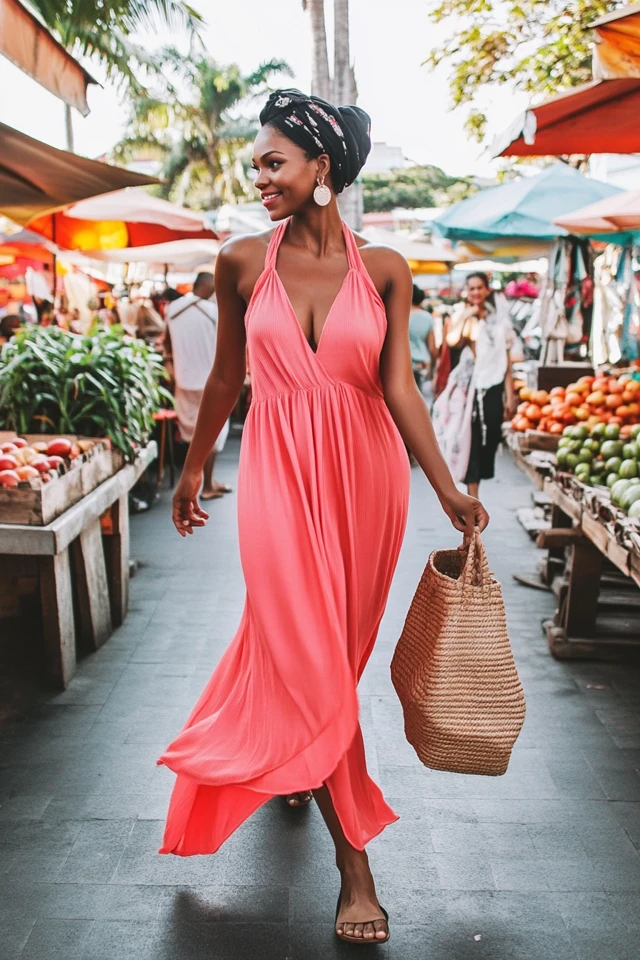
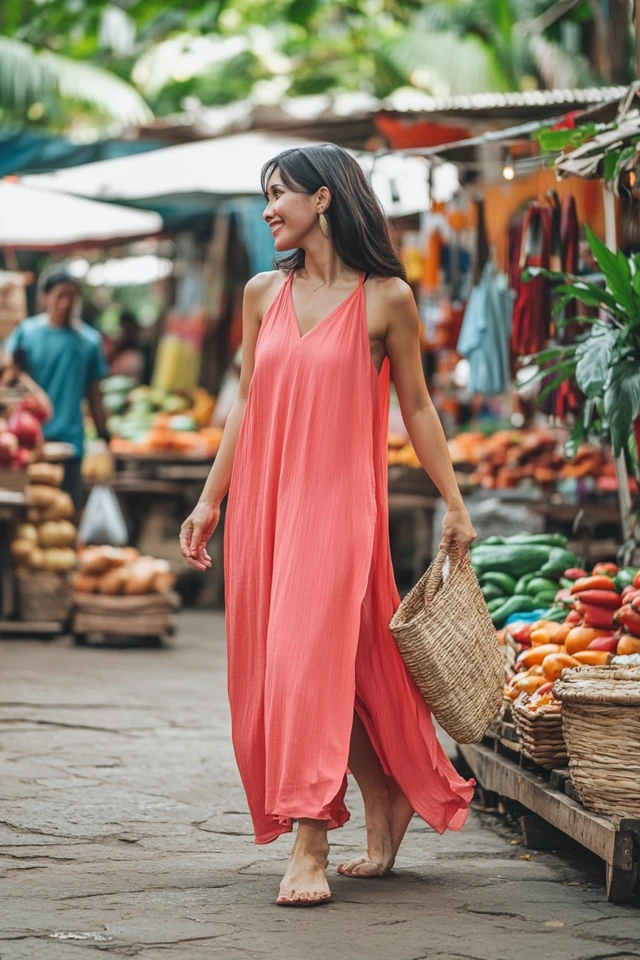
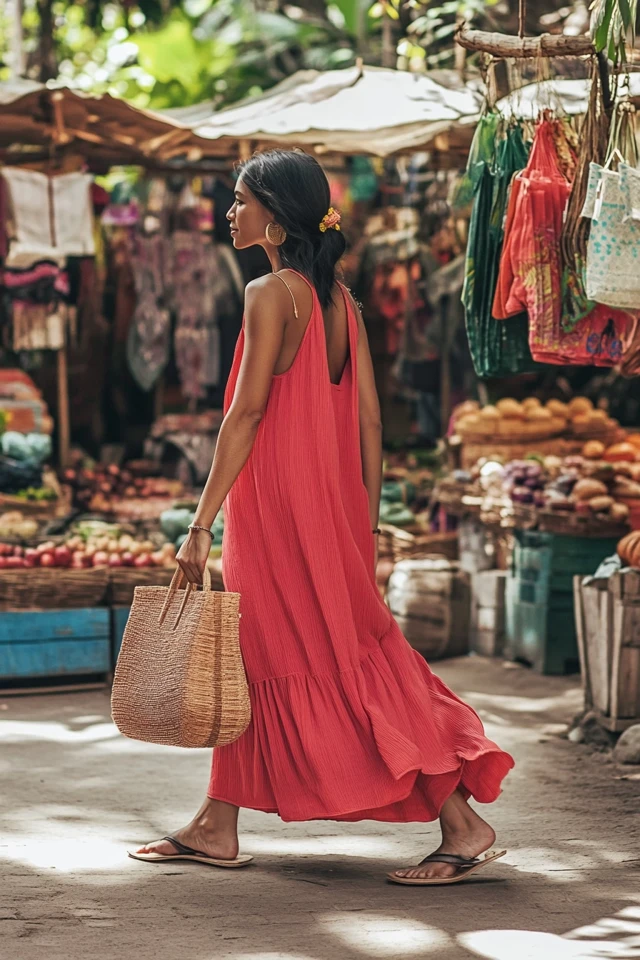

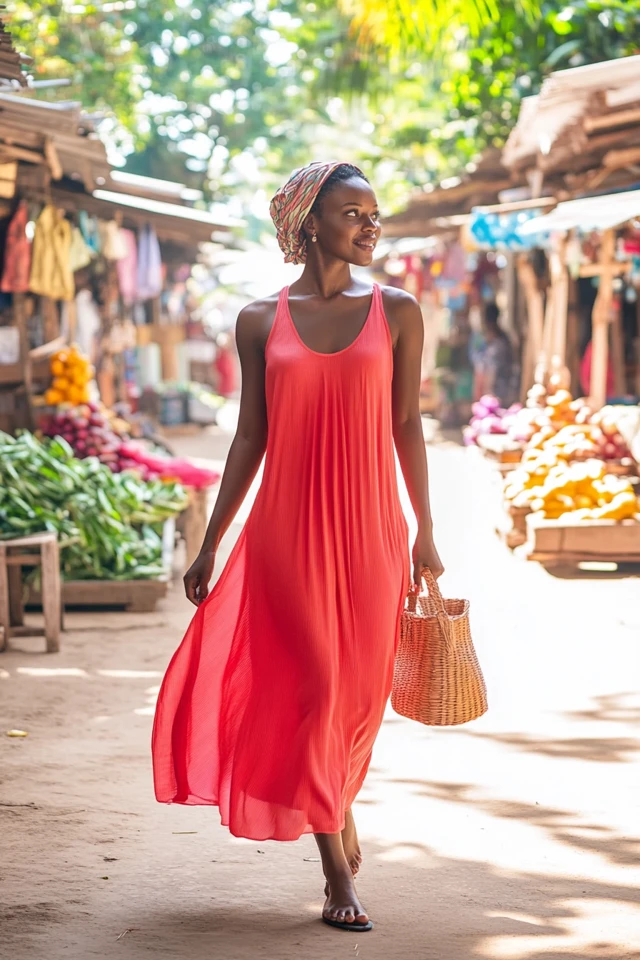
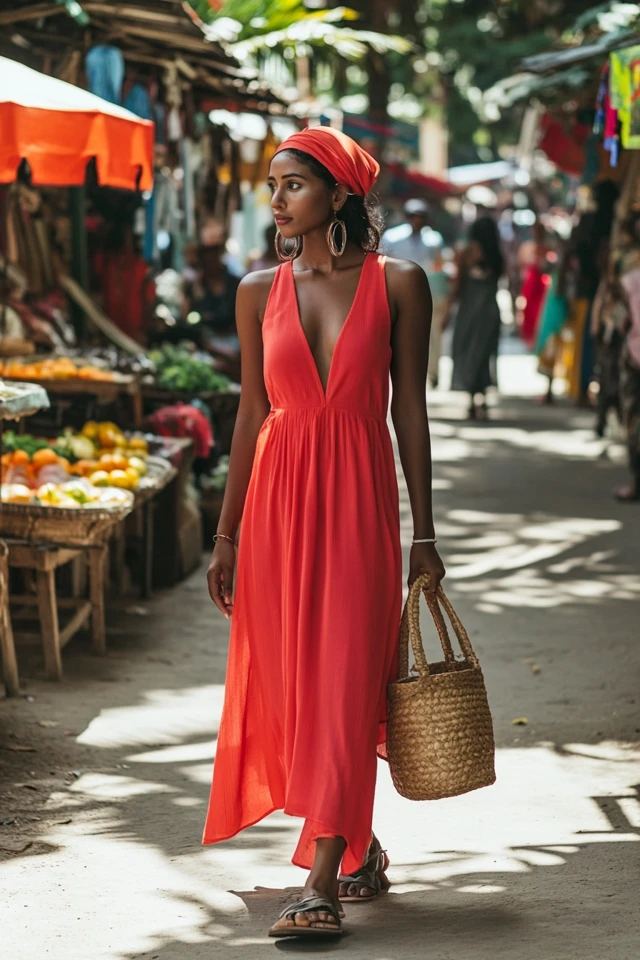
Conclusion
Navigating the challenges of humid climates doesn’t mean you have to compromise on style or comfort. By choosing the right fabrics, opting for breathable and versatile styles, and accessorizing thoughtfully, you can maintain a chic and comfortable wardrobe all year round. Embrace the principles of humidity-friendly fashion to stay cool, look fabulous, and enjoy your social gatherings without the discomfort of damp and sticky clothing.
Remember, the key to stylish comfort in humid weather lies in understanding your fabrics, selecting the right silhouettes, and maintaining your wardrobe with care. With these tips and inspirations, you’re well-equipped to conquer the heat and humidity with grace and elegance.
Happy styling, and may your wardrobe keep you cool and confident in every humid moment!
FAQs
1. What are the best fabrics to wear in high humidity?
- Answer: The best fabrics for high humidity include cotton, linen, bamboo, rayon, and lightweight blends with moisture-wicking properties. These materials are breathable, absorb moisture, and dry quickly, keeping you comfortable in humid conditions.
2. How can I prevent my clothes from sticking to me in the heat?
- Answer: To prevent clothes from sticking, choose loose-fitting garments made from breathable fabrics like cotton and linen. Additionally, wearing moisture-wicking undergarments can help keep sweat away from your skin, reducing the likelihood of clothes clinging.
3. Are synthetic fabrics suitable for humid weather?
- Answer: While many synthetic fabrics can trap heat and moisture, some modern synthetics with moisture-wicking technology are suitable for humid weather. Look for fabrics labeled as moisture-wicking or quick-drying to ensure they perform well in high humidity.
4. How can I style a lightweight dress for a humid day?
- Answer: Style a lightweight dress by pairing it with breathable sandals or espadrilles. Add a straw hat and a lightweight cardigan or kimono for extra coverage. Accessorize with minimalistic jewelry and a crossbody bag to complete the look.

